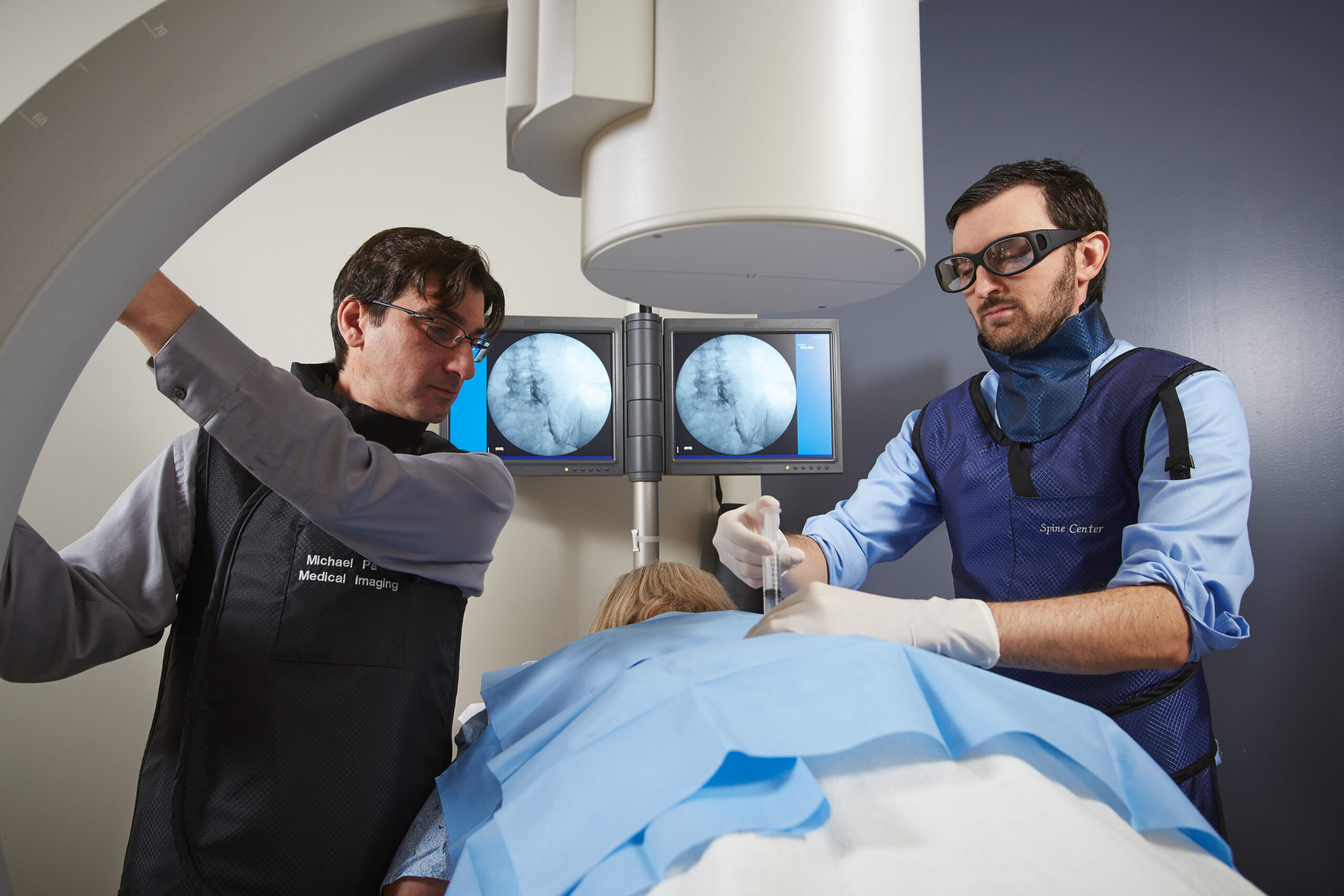Good Shepherd’s physiatrists are experienced in administering electromyography (EMG) tests, which measure muscle response or electrical activity of muscles at rest and during movement or contraction. This diagnostic test can find diseases that damage muscle tissue, nerves or the junctions between nerves and muscles, as well as determine the cause of weakness, paralysis or muscle twitching (i.e., muscular dystrophy or carpal tunnel syndrome).
What is an EMG?
An electrodiagnostic study involves the recording of responses to electrical stimulation for the purposes of diagnosing a condition. The sheer complexity of the spine makes determining the exact source of a patient’s pain a difficult undertaking.
In addition, the fact that many other musculoskeletal problems can mimic spinal mediated pain makes it essential that a clinician perform a thorough evaluation in order to offer treatments that will result in the best outcomes. Part of this evaluation may include EMG, which can help evaluate the integrity of nerves and possibly identify nerve abnormalities that could cause pain.
What to Expect During Your EMG Test
Electrodiagnostic medicine is the study of diseases of nerves and muscles. Your doctor has recommended an EMG test to see if your muscles and nerves are working well. You may have a muscle or nerve problem in only one part of your body or throughout your body. The results of the tests will help your doctor decide what is wrong and how it can be treated.
Why am I being sent to the EMG Lab for tests?
You are being sent to the EMG lab because you have numbness, tingling, pain, weakness or muscle cramping. Some tests may be used to diagnose your symptoms are nerve conduction studies (NCS) and needle EMG. The physician will examine you to decide which tests to perform.
Nerve Conduction Studies (NCS)
NCS show how well the body’s electrical signals are traveling to a nerve. This is done by applying small electrical shocks to the nerve and recording how the nerve works. These shocks cause a quick, mild, tingling feeling. The doctor may test several nerves.
Needle EMG
For this part of the test, a small, thin needle is put in several muscles to see if there are any problems. A new needle is used for each patient and it is thrown away after the test. There may be a small amount of pain when the needle is put in. The doctor tests only the muscles necessary to decide what is wrong. The doctor will look at and listen to the electrical signals that travel from the needle to the EMG machine. The doctor then uses his medical knowledge to figure out what could be causing your problem.
How long does an EMG take?
The tests usually take 45 to 90 minutes. You can do any of your normal activities, like eating, driving and exercising, before the tests. There are no lasting side effects. You also can do your normal activities after the tests.
How should I prepare for the tests?
Tell the EMG doctor if you are taking aspirin, blood thinners, have a pacemaker or have any blood clotting disorders (such as hemophilia). Take a bath or shower to remove oil from your skin. Do not use body lotion on the day of the test. If you have myasthenia gravis, ask your EMG doctor if you should take any medications before the test.
When will I know the test results?
The EMG doctor will interpret your test results and send them to your referring doctor. After the exam, check with your doctor for the next step in your care.
Request an Appointment
For more information on EMGs or to request an appointment, call 1.888.44.REHAB (73422) or fill out the form below.


